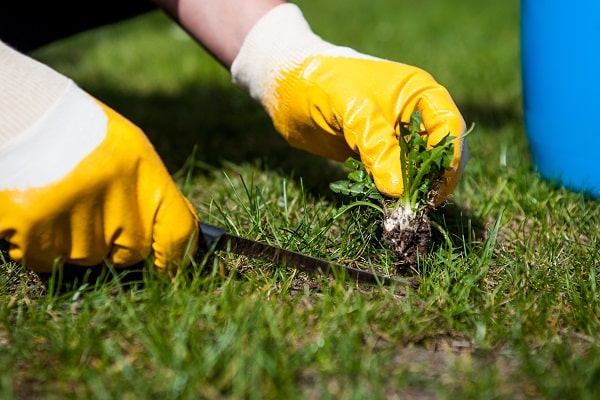Home / Information & advice / Turf & Lawns Advice / Lawn aftercare / How to patch repair a lawn
Bald patches, discolouration or holes can occur on your lawn for a host of reasons, including damage from pets, pests and grubs or removal of weeds, there are many reasons that bald or discoloured patches can appear on your lawn, from time to time.
Before working on any repairs, if you can identify and address cause of the patch you might be able to limit the recurrence. It might be scorch marks from dog urine, which we talk about in our guide to dealing with Damage to lawns caused by animals, or perhaps the area is particularly shaded and therefore a more shade-tolerant seed or turf is required.
Whatever the cause, ‘Patch repair’ is straightforward, with either seed or new turf.

Commercial patch-repair products are a blend of topdressing, fertiliser and lawn seed, easily replicated by preparing your own mix. Combining the seed with the topdressing, or a light topsoil, helps to distribute the seed evenly and the fertiliser assists with germination.
It’s best to use a high quality seed as this will be more likely to germinate. A dwarf perennial ryegrass and fescue mix will be resilient, giving a good level of wear resistance, and will also have a suitable appearance. In dry, free-draining gardens, particularly in coastal areas, a strong fescue or tufted hair grasses could be used in a mix.
Medallion® lawn seed typically contains approximately 70% dwarf perennial ryegrass, and 30% fescues which includes a strong fescue cultivar.
To make your patch repair mix, you can use a ratio of two handfuls of fine topsoil to one handful of seed.
Returfing is a quick and efficient way to repair or replace a damaged patch. As with seeding a patch, aim to use a turf that is known for wear resistance, such as Rolawn Medallion® turf which is blended with this in mind. Alternatively, for small patches, you can take some from elsewhere in your garden, for example by enlarging a border.
Our ‘How to lay turf’ guide has more tips on successfully laying turf.